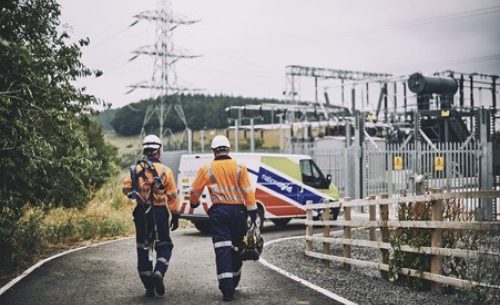

Dinorwig Hydroelectric power station
Operational Alarm System / Plant and equipment events
Dinorwig Power Station is located in North Wales and is a 1,728 MW pumped storage hydroelectric power plant and is one of the largest of its type in Europe.
Its primary function is to provide Reserve (STOR)1 and response services to the National Grid Reserve Service 2 and as such is a critical facility.
Dinorwig provides a fast response to rapid short-term increases in power demand or the sudden loss from the UK grid of other generators. It is also increasingly being used to balance the constant fluctuations in output from the UK’s wind and solar generation capacity. The facility is of strategic importance to the UK energy market because it is the largest and one of the fastest-acting pumped storage plants in the UK.
The Need
The alarm system at Dinorwig provides a vital means of alerting plant operating staff to anomalies in plant or equipment during start up, operation and shutting down procedures, and provides visibility of the sequence of events during an abnormal situation.
Timely and accurate data and alerts ensure intervention is made, plant disturbance is avoided and production is optimised, thereby maximising revenue. The existing alarm systems at Dinorwig comprised an alarm PLC and a high-speed data-logger system of different technologies. These had become unreliable and were difficult and costly to maintain due to obsolescence issues.
There was a heightened risk of plant disruption due to missing alarm annunciation, making it vulnerable and a risk to the business. ENGIE therefore decided to replace the system with a new system that would be easy to maintain and more intuitive for the operators to use.

Benefits
- Secure: vital alarm alerts ensure situations are dealt with rapidly
- Reduces cost: enhanced alarm functions allow client to fulfil response obligations
- Easy to use: new intuitive system mirrors existing systems
- Easy to maintain: simplified system architecture
Why Capula?
Capula was awarded a contract to develop a new system for the first two generating units. Following successful delivery which was completed on time and to budget, further contract awards were given for alarm system upgrades on each unit. The contract covered the full scope of supply including design, software engineering, manufacture, delivery and installation of the alarm PLC system equipment into the client’s existing cubicles with associated replacement of ancillary components.
Capula solution
The new system now provides an effective alarm annunciation that is necessary to not only protect the plant and personnel, but also to allow potential loss of availability to be dealt with quickly. This enables the secure delivery of a contracted level of power, when instructed by National Grid, meeting the obligations defined for example by STOR1 under its reimbursement conditions.
The new system allows the client to proactively and quickly analyse a sequence of alarm events and deal with potential plant disturbance situations quickly preventing them from escalating. This results in business efficiencies and surety of electrical supply, allowing the client to effectively fulfil its obligations to National Grid as part of its commitment to the National Grid Reserve Service 2.The replacement of the existing PLC and separate data-logger systems with a single new PLC incorporating both of these functions significantly simplified the system architecture, making it easier to maintain. Enhanced diagnostic features of the upgraded system facilitate simplified fault-finding, which will in turn will reduce plant downtime. The replacement operator display was designed with a common look and feel that is similar to existing Dinorwig systems, which not only helps reduce operator training time, but helps to minimise operator error and simplify tasks.
Capula has successfully delivered a number of control projects at Dinorwig since 2008. Our engineers’ knowledge of the Dinorwig control systems and their expertise in the chosen hardware platform, contributed to the success of the project delivery.
The new alarm systems were commissioned prior to the unit being returned to service so that they could be used during the final critical stages of plant commissioning.
References
STOR
National Grid Reserve Service
Nuclear can take days and coal power plants take hours to reach the necessary temperatures for energy generation which is too slow to address unexpected or rapid power shortages.








